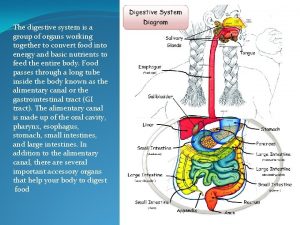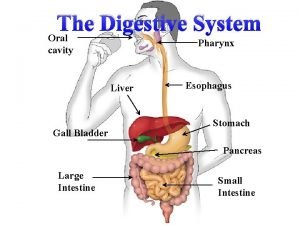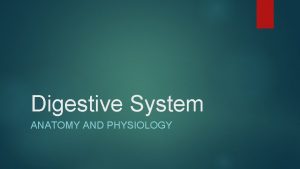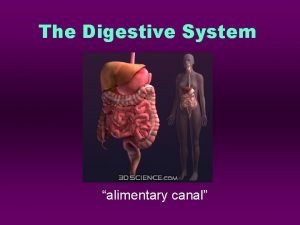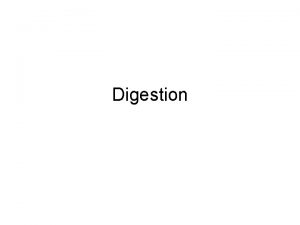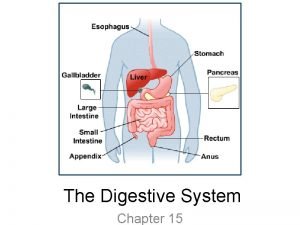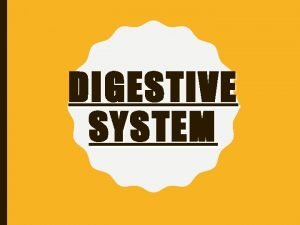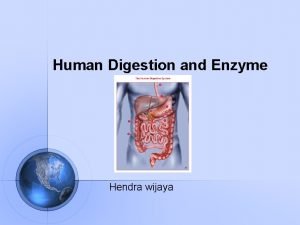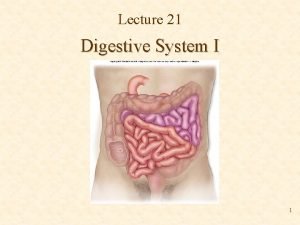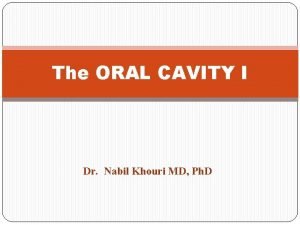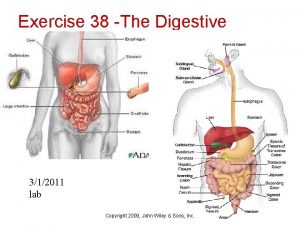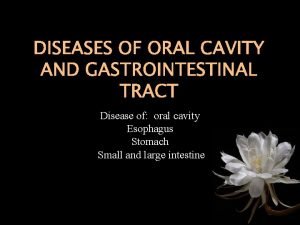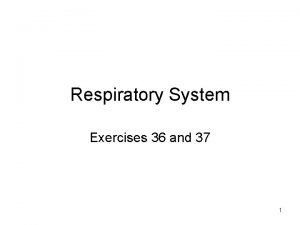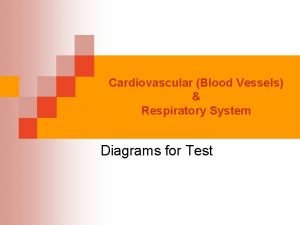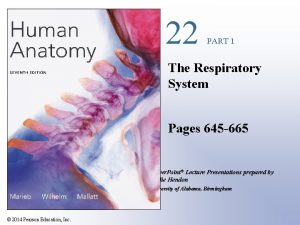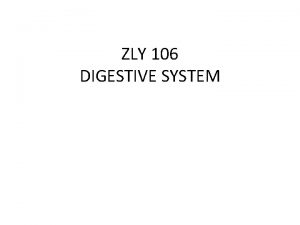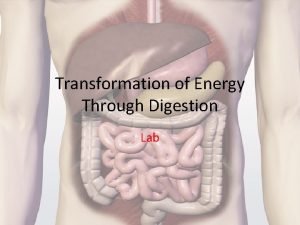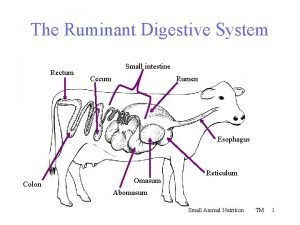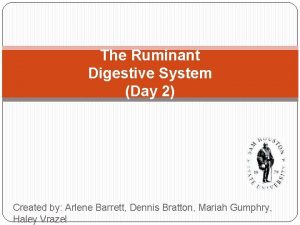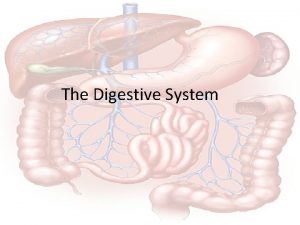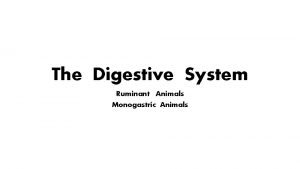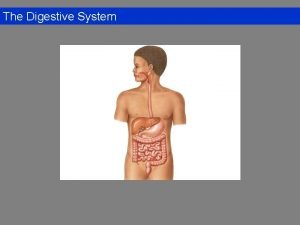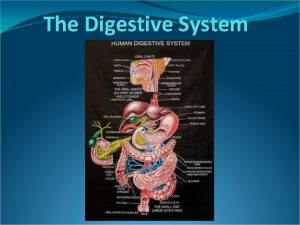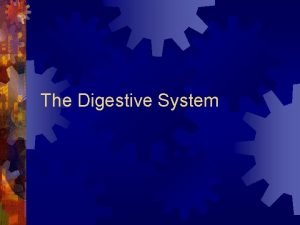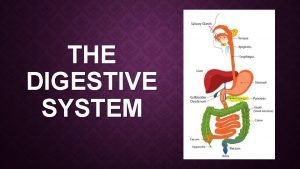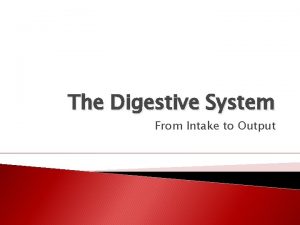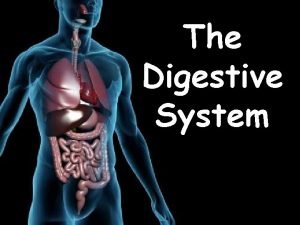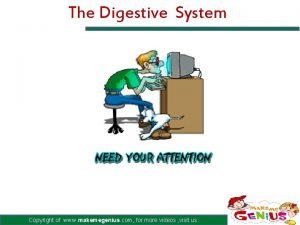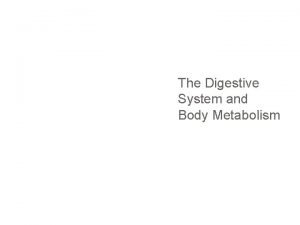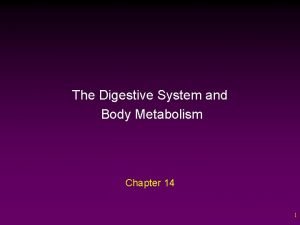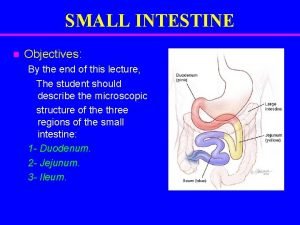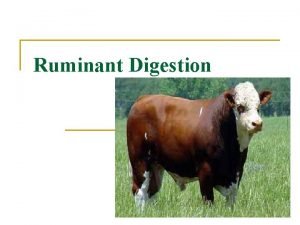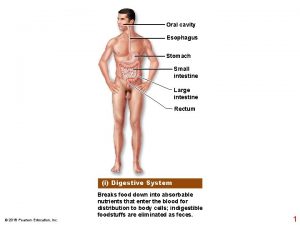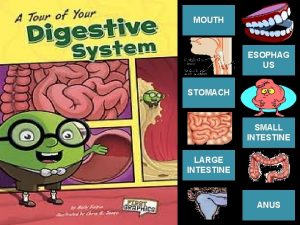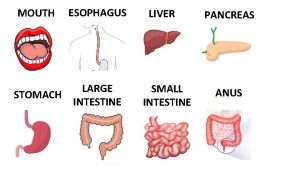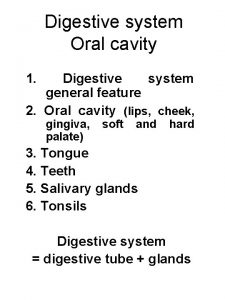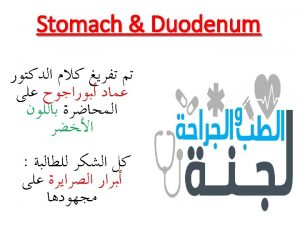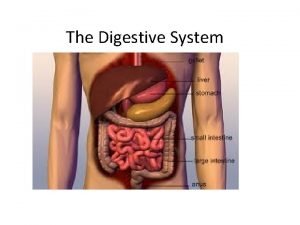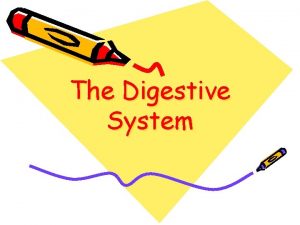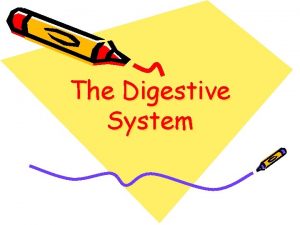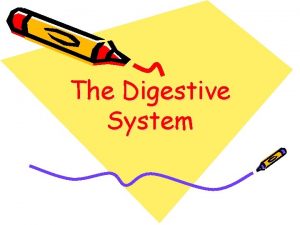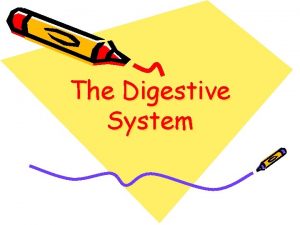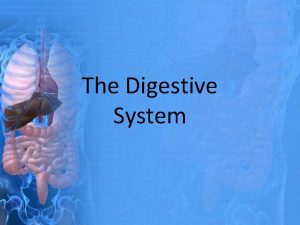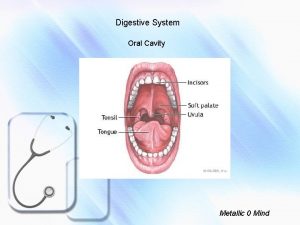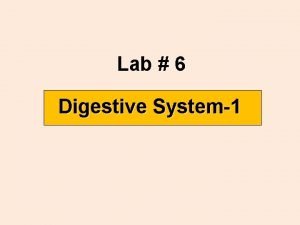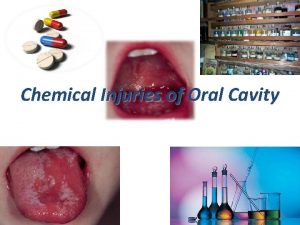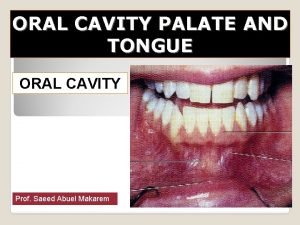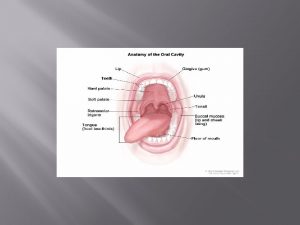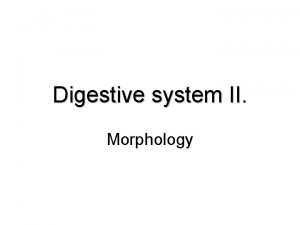DIGESTIVE SYSTEM Oral Cavity to Stomach Intestine Time




















































- Slides: 52

DIGESTIVE SYSTEM!!

Oral Cavity to Stomach Intestine Time Accessory Organs 10 10 10 20 20 20 30 30 30 40 40 40 50 50 50 Digestive Enzymes & Disorders Hormones

Question 1 - 10 Deep folds of the inner lining of the stomach that allow it to stretch are called what?

Answer 1 – 10 Rugae

Question 1 - 20 The food that is partially digested in the stomach is known as what?

Answer 1 – 20 Chyme (not chime)

Question 1 - 30 What are three main portions of the stomach? (cardiac region considered #4)

Answer 1 – 30 Fundus Body Pylorus

Question 1 - 40 What is the layer of the gastrointestinal tract that is responsible for the actions of segmentation and peristalsis?

Answer 1 – 40 Muscularis externa - There are 3 layers of muscle in the stomach for mechanical digestion/ “churning” the foodstuffs

Question 1 - 50 Where in the stomach does the most digestive activity occur?

Answer 1 – 50 PYLORUS

Question 2 - 10 What is the portion of the digestive system most responsible for absorption of water from the indigestible residue of food?

Answer 2 – 10 Large intestine (MAJORITY OF WATER absorbed in small intestine)

Question 2 - 20 Elimination of indigestible material from the body as feces is called what?

Answer 2 – 20 Def. Ecation!

Question 2 - 30 What are three modifications of the mucosa and submucosa of the small intestine?

Answer 2 – 30 Villi Microvilli Circular folds (plicae circulares)

Question 2 - 40 What are three sections of the small intestine?

Answer 2 – 40 Duodenum Jejunum Ileum

Question 2 - 50 What are the pouches that give the large intestine its “puckered” appearance?

Answer 2 – 50 Haustra (TENIA COLI = flat bands of L. I. )

Question 3 - 10 Name at least four accessory organs of the digestive system.

Answer 3 – 10 Liver Pancreas Gallbladder Teeth/ Tongue Salivary glands

Question 3 - 20 Pancreatic juice is a mixture of digestive enzymes that is released into what?

Answer 3 – 20 Pancreatic duct Duodenum (of Small Intestine)

Question 3 - 30 What is the structure in the digestive system that stores bile?

Answer 3 – 30 Gallbladder

Question 3 - 40 Only one organ produces enzymes capable of digestive all 4 major organic molecule groups. What organ is this? And what are the 4 groups?

Answer 3 – 40 Pancreas Carbohydrates Lipids Proteins Nucleic acids

Question 3 - 50 Pancreatic juice contains many enzymes as well as what chemical compound which gives pancreatic juice a slightly basic p. H (and inactivates pepsin from the stomach)?

Answer 3 – 50 Sodium bicarbonate Na. HCO 3

Question 4 - 10 What are the craterlike lesions that form in the mucosa when it is exposed to acidic juices?

Answer 4 – 10 Ulcer (peptic ulcer = in stomach)

Question 4 - 20 What is a protrusion of all or part of an organ through a membrane called?

Answer 4 – 20 hernia

Question 4 - 30 What condition is a type of irritable bowel disease that usually affects only the mucosa of the large intestine and rectum?

Answer 4 – 30 Ulcerative colitis

Question 4 - 40 What is an inflammation of the digestive tract that may extend from the mucosa to the serosa , anywhere from the oral cavity through the end of the intestines?

Answer 4 – 40 Crohn’s disease

Question 4 - 50 FULLY explain what happens in the condition “GERD”.

Answer 4 – 50 Same as Heartburn (GERD = Gastroesophageal reflux disease ) Acidic gastric juices move from stomach into the esophagus through a leaky cardioesophageal valve.

Question 5 - 10 Name the enzyme that begins digestion of starches.

Answer 5 – 10 Salivary amylase

Question 5 - 20 What hormone stimulates the secretion of gastric juice?

Answer 5 – 20 Gastrin

Question 5 - 30 What is one example of an enzyme in pancreatic juice that digests proteins?

Answer 5 – 30 Trypsin Chymotrypsin Elastase carboxypeptidase

Question 5 - 40 What two hormones work to maintain homeostasis through the stimulation of the secretion of pancreatic juice and secretion of bile?

Answer 5 – 40 Secretin Cholecystokinin

Question 5 - 50 The cells of which organs serve as the control center as well as the effectors for two major hormones in maintaining digestive homeostasis?

Answer 5 – 50 Pancreas Liver / Gallbladder
 Thoracic membranes
Thoracic membranes Esophagus stomach small intestine large intestine
Esophagus stomach small intestine large intestine Digestive system cavity
Digestive system cavity Duodenum function in digestive system
Duodenum function in digestive system Alimentary canal
Alimentary canal Digestive system enzymes chart
Digestive system enzymes chart Anatomy of small and large intestine
Anatomy of small and large intestine Large intestine function in digestive system
Large intestine function in digestive system Large intestine function in digestive system
Large intestine function in digestive system List of digestive enzymes
List of digestive enzymes Body cavity
Body cavity Thoracic cavity and abdominal cavity
Thoracic cavity and abdominal cavity What is the transverse mesocolon
What is the transverse mesocolon Parietal and visceral peritoneum
Parietal and visceral peritoneum Circularory system
Circularory system The roof of the oral cavity
The roof of the oral cavity Pharynx and oral cavity
Pharynx and oral cavity Landmark of the face
Landmark of the face White appearance
White appearance Dr nabil khouri
Dr nabil khouri Monophasic solution meaning
Monophasic solution meaning Serves as a mixing chamber and holding reservoir
Serves as a mixing chamber and holding reservoir Normal flora of oral cavity
Normal flora of oral cavity Sialedinitis
Sialedinitis Nervous system and digestive system
Nervous system and digestive system Start time end time and elapsed time
Start time end time and elapsed time Respiratory system nasal cavity
Respiratory system nasal cavity Respiratory zone structures
Respiratory zone structures Respiratory zone
Respiratory zone Goat digestive system
Goat digestive system Monogastric system
Monogastric system Food digestion energy transformation
Food digestion energy transformation Swine digestive system
Swine digestive system Ruminant digestive system
Ruminant digestive system Ruminant digestive system
Ruminant digestive system Which term means “no sperm or semen are produced”?
Which term means “no sperm or semen are produced”? Digestive system roller coaster
Digestive system roller coaster Digestive system facts
Digestive system facts Monogastric vs ruminant
Monogastric vs ruminant Serosa vs adventitia
Serosa vs adventitia Introduction of human digestive system
Introduction of human digestive system Plicae digestive system
Plicae digestive system Pepto bysmol
Pepto bysmol Digestive system output
Digestive system output Digestive system
Digestive system What is egestion
What is egestion Makemegenius digestive system
Makemegenius digestive system The digestive system and body metabolism
The digestive system and body metabolism Hepatic portal system
Hepatic portal system Biggest muscle in human body
Biggest muscle in human body M cells
M cells Ruminant digestive system
Ruminant digestive system Turtle digestive system
Turtle digestive system

